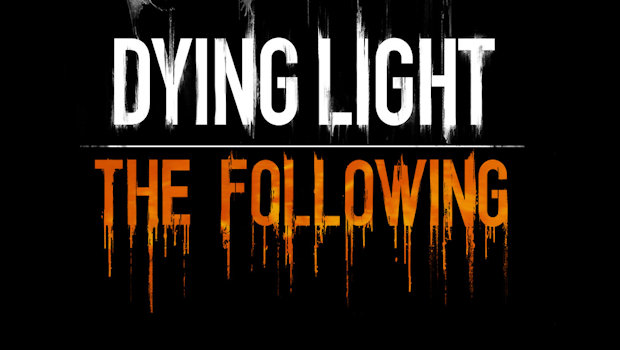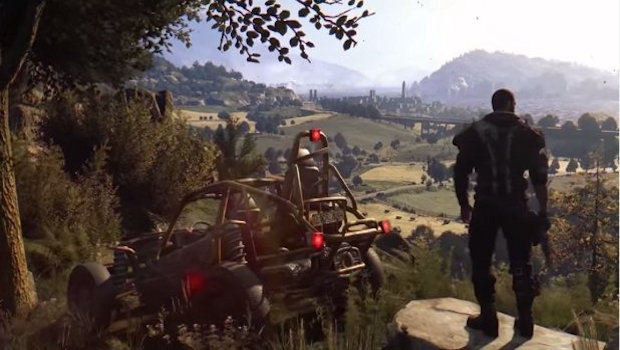Last year, Techland released Dying Light. When I reviewed it, I thought it was a really good game that did some really smart things while not really pushing the open-world RPG genre forward very far. It was little more than an expansion on the design philosophy the development house had explored with Dead Island, but a more polished experience than its predecessor ever was. Its focus on personal mobility in the open world and the truly terrifying nighttime encounters made the game feel fresh and new. I felt it was such a strong experience that it ended up making my Top 10 of 2015 list, but, yet, I also wasn’t sure I needed to go back to it.
The expansion to Dying Light, The Following, asks you to jump back into the skin of fleet footed hero Kyle Crane. Set some time after the events of the main game, the state of the survivors in the zombie infested city of Harran has grown grim. Medical supplies have become dramatically scarce, particularly the infection inhibitor Antizen. Rumors of a cure in the countryside have circulated via black market traders and Kyle is tasked with heading outside the walls and investigating these reports. What Kyle finds outside the city is a weird religious cult that seemingly has the ability to hold the zombies at bay.
The story strings together a narrative that pulls you along just enough to reach its conclusion. The plot, while somewhat intriguing, is also riddled with inconsistencies that if thought about too much can detract a bit from the overall experience. Thankfully, it’s such a small aspect of The Following that I didn’t really mind it too much. The Following shines exactly where the base game did: in its gameplay.
The Kyle Crane that starts the expansion is the same Kyle Crane I had played as a year ago. All my equipment and skills carried over, and after a short adjustment period of getting the controls down again, I felt pretty capable. And then I dropped off a cliff into this scary new world. As mentioned, The Following sees Kyle exploring the countryside outside the city. The new map is expansive, matching the size of the original game in its scope. What is different is that, being the countryside, everything is far more open than when in the city.
In Dying Light I always had multiple escape routes to avoid the zombie hordes. I could climb up the side of a building, leap from car to car, or slide under a fence, to avoid getting cornered. It was always dangerous but by the end of the game, I no longer really felt vulnerable because I was confident enough in my agility skills to escape any encounter. The Following strips that confidence away immediately when you step out and see expansive farmland covered by the undead.
The Following was specifically designed this way because it introduces driving to the game. Kyle’s buggy, which I had to find early on via a story mission, is the security blanket out in the countryside. When you are in it, you can, generally, get away from anything by rolling over the undead. However, the buggy isn’t invulnerable. Like the melee weapons in the game, the vehicle degrades with use. And just like a real car, it requires fuel to keep going.
It’s a bit funny because, while I have always hated weapon degradation in games like this, I enjoyed the requirement to upgrade and maintain the buggy. One of those reasons is that it forces you to actively hunt for salvage. Aside from being out in the dark, the scariest part of The Following is when you are slowly searching cars and trucks for fuel and parts. I constantly debated the risk vs. reward of searching a grouping of cars or venturing out a little further to search the next group. The tension was nerve wracking and exhilarating at the same time. I loved it, and for the first time ever in one of these games I felt like I was actually surviving in a zombie apocalypse.
The driving of the buggy itself is quite arcadey, with loose handling that feels appropriate for the vehicle. I’d most equate it with driving in games like Far Cry, where it always feels like you are one step away from losing control of everything and flying off a cliff. In fact, I did, more than once, drive off a cliff into a river or bay. Dropping the buggy at the bottom of the bay is an easy way to strand oneself in the open and I had to get my hiking boots on and hoof it back to a safe house where I could have it towed back to (where the magical tow truck comes from still perplexes me).
Alongside the driving comes two all new skill trees to upgrade. The driving tree, which like the agility and combat trees before it, levels up based on the amount that skill is being used. Leveling it up will allow for better perks to be applied to the buggy and the ability to craft superior components to keep the vehicle in better shape. I found the system leveled me up pretty quickly but it seemed appropriate as I did an awful lot of driving over the 15 hours I spent with The Following. The other skill tree is the Legend tree. This set unlocks after having maxed one of the other skill trees. I still have not maxed out any of my trees but from what I can gather, the system is modeled after Diablo III’s Paragon system where you can continue to level up indefinitely while making yourself more and more godlike in the process.
Everything else in The Following remains largely the same as it is in the base game. There are story missions, side missions, and random encounters. There are safe houses to unlock, chests to loot, and all manner of secrets to unlock. You can still call in care packages from the app, giving you much needed supplies and money. And similar to the base game, the ending mission can be some cause for frustration, albeit for different reasons.
The finale of Dying Light was a multi-part sequence that saw you utilizing all the skills you had learned over the course of the game but it did so in a way that required utter perfection at certain points, causing unnecessary frustration. The finale of The Following is also a multi-part sequence but aside from driving from each of the relevant points, the skill most needed is shooting firearms against other humans. And, well, the shooting in Dying Light is barely passable at its best. It’s just something of a letdown when everything else in the game is so much fun and offers so many different ways to tackle scenarios. I did however find the actual ending to the campaign be highly satisfying (if extremely dark). And this is regardless of which decision you make at the end, as both finales are dark, depressing, and put a definitive end on Kyle Crane’s adventure in Harran.
Ending aside, once done you can rewind time and continue playing in the countryside or head back to the city and continue to do side quests, scavenge, just run around on roof-tops, and what-have-you. I may or may not find time to do that and play more Dying Light (although there are some easy achievements within striking distance) but even if I don’t go back I’m glad I did venture back in for The Following. Dying Light was a really good game and The Following is the rare expansion that feels like it truly expands on its original base.
This review was written with material provided by the publisher on the Xbox One console. For more on our review process, please read here.


